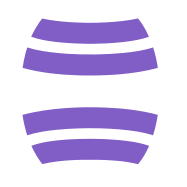Ethereum is often hailed as the backbone of Web3, serving as a foundational protocol upon which a vast array of decentralized applications (dApps) are built. This blockchain platform extends beyond the capabilities of its predecessor, Bitcoin, by offering a flexible environment for smart contracts and decentralized autonomous organizations (DAOs). In this blog post, we’ll delve deeper into Ethereum’s multifaceted ecosystem, exploring how it’s shaping the future of decentralized internet.
Introduction
Blockchain technology has evolved immensely since the inception of Bitcoin, with Ethereum emerging as a pivotal player in the transition toward a more decentralized web – commonly referred to as Web3. Ethereum’s introduction of smart contract functionality has unlocked an entirely new realm of possibilities, from finance to gaming and beyond. Its continuous development and strong community support highlight Ethereum’s commitment to remaining at the forefront of Web3 innovation.
Body
What is Ethereum?
Ethereum is a decentralized, open-source blockchain system that features its own cryptocurrency, Ether (ETH). While Bitcoin introduced blockchain to the world, Ethereum expanded upon the concept by building a platform that can execute smart contracts and host dApps without the need for intermediaries. These contracts are self-executing agreements with the contract terms directly written into lines of code, which greatly reduces the risk of fraud and the need for trusted third parties.
Key Features of Ethereum
-
Smart Contracts: Ethereum’s most notable innovation is its support for smart contracts, which automate transactions and facilitate complex applications like decentralized finance (DeFi) and non-fungible tokens (NFTs).
-
Ethereum Virtual Machine (EVM): At the heart of Ethereum’s operations is the EVM, which serves as a runtime environment for smart contracts. The EVM ensures that all dApps run in a trustless and isolated environment, achieving consensus without centralized control.
-
Decentralized Applications: Ethereum hosts a wide spectrum of dApps that offer services ranging from financial instruments and games to identity management and decentralized exchanges.
-
ERC Standards: Ethereum’s ERC standards, such as ERC-20 for fungible tokens and ERC-721 for NFTs, provide a blueprint for developers to create interoperable tokens and digital assets.
Ethereum 2.0 and the Road Ahead
A significant milestone in the evolution of Ethereum is the transition to Ethereum 2.0 (Eth2), which aims to address scalability and security issues. Eth2 introduces a proof-of-stake (PoS) consensus mechanism, replacing the energy-intensive proof-of-work (PoW) system. The shift towards PoS, along with the introduction of sharding, has the potential to enhance transaction speeds and reduce gas fees while maintaining a robust level of security.
The Challenges of Ethereum
Despite its advantages, Ethereum faces challenges that could affect its future as a leading Web3 protocol. Scalability remains a pressing issue, as the network often experiences congestion, leading to high transaction fees during peak usage times. Additionally, the transition to Eth2 has been slow, with multiple phases and updates expected to roll out over the coming years. These obstacles necessitate continuous improvements and community cooperation to ensure Ethereum’s scalability and sustainability.
Conclusion
Ethereum’s revolutionary approach to decentralized applications and smart contracts underscores its crucial role in the development of Web3. It has created a thriving ecosystem that supports innovation and offers a glimpse into a decentralized future that many enthusiasts aspire to. While challenges remain, Ethereum’s strong community and forward-thinking upgrades like Eth2 promise to address these roadblocks and solidify its position as a leading Web3 protocol.
As the landscape of decentralized technology continues to evolve, Ethereum is expected to keep playing a significant role in shaping it. Its adaptability and resilience will be critical in overcoming upcoming challenges and reaching new heights in the era of Web3.

